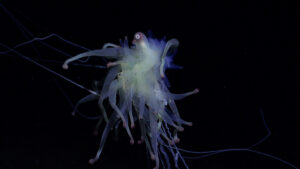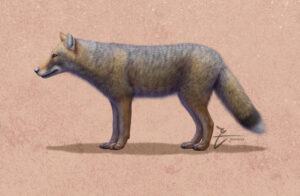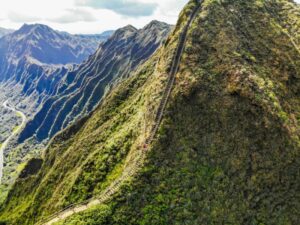In the remote village of Uelen in Siberia’s Chukotka, there aren’t any restaurants. No takeouts or curbside deliveries, either. So I went foraging for mushrooms on the local tundra, and I soon collected enough Scaber Stalks (Leccinum scabrum) to feed me for several days, assuming I accompany them with something like walrus blubber. For mushrooms require more calories to digest than they contain, so it’s a good idea to eat a fatty food along with them.
On another day I went foraging with a local schoolteacher named Umqy (Polar Bear). We happened on a fruiting of Amanita muscaria, which the Chukchi call wapak. This red-capped, psychoactive mushroom with rings of white warts on its cap is an iconic species, appearing in Alice in Wonderland as well as on postcards and stoner websites.

Chukotka, in Siberia’s far northeast. Photo: Wikipedia
Traditionally, the Chukchi ate A. muscaria in order to get in touch with their ancestors, and upon doing so, they’d ask those ancestors about (for example) how to get rid of the viral infection afflicting their reindeer or whether a potential wife would be a decent mate.
“With a wapak, you don’t need a ticket or a boarding pass,” Umqy said, a grin on his face. For the mushroom typically makes you feel like you’re flying.
Here I should mention that Chukchi who ate wapaks in Stalinist times were regarded as enemies of the state because they were engaged in a highly individual rather than a communal act. Reputedly, those who ate wapaks were forced onto a plane, and once the plane was in the air, the cargo door would be flung open.
“You say you can fly,” a Stalinist henchman would announce. “Okay — then fly…” Whereupon he would push his victim out of the plane.
Even today, most Chukchi are reluctant to talk about cultural matters with Russians, so planted in their genes are incidents from the Soviet era. We have no wapaks in our area, a Chukchi elder told a Russian ethnographer of my acquaintance. But since I wasn’t Russian, Umqy happily shared his lore with me. For example, he gave me the following instructions on how to pick wapaks:
You should be extremely careful with the cap. If you damage it, you might end up with some sort of head injury. If you remove the warts from the cap, you might end up losing all your hair. And if you injure the stem, something unpleasant will happen to one of your legs.
“How unpleasant?” I asked.
“The leg might need to be amputated,” he replied.
I’d heard that only a shaman was allowed to eat the mushroom in earlier times, and then his followers would drink his urine. For muscimol — the primary trip-taking alkaloid in A. muscaria — passes through a person’s system more or less unaltered.
I asked Umqy if he had ever drunk the urine of a shaman.
“We hardly have any shamans anymore,” he said. “But I once drank some of my own mocha (piss) after I ate a few wapaks. I didn’t fly very far, though…”
I decided to eat some wapaks myself. So I gathered a few, being very careful not to damage any part of them. Umqy then told me that I had to bare my naked buttocks to the moon just before I ate them, or I would suffer from a prolonged bout of bad luck. When I lowered my trousers and raised my buttocks, Umqy and a few of his friends burst into riotous laughter.
“We’ve made a joke on you,” Umqy said.
“Luna ne naplevat’ na tvoyu zadnitsu!” one of his friends remarked. Which means, “The moon doesn’t give a damn about your ass” in Russian.
But how did I feel after eating the mushroom? As it happened, I didn’t fly off to visit my ancestors, wherever they happened to be, but I did feel euphoric, an emotion somewhat unusual for me. In fact, I felt so upbeat that I joined the other individuals in laughing at the sight of my naked buttocks.
Let me conclude by saying that most Chukchi don’t eat wapaks nowadays. Instead, they drink vodka, lots of it. I can imagine their ancestors feeling very lonely, with almost no one visiting them anymore.






